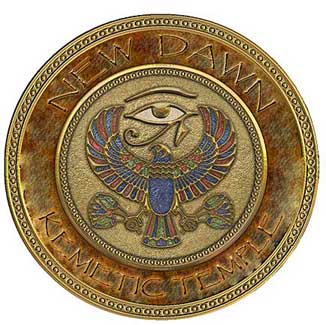|
|
|


~Craig Hildreth~
Any fan of ancient Egypt is familiar with the rescue work
performed by Egypt and the world community in Nubia in order to save monuments
located there from the rising waters of Lake Nasser created by the High Aswan
Dam. More than 22 missions from all over the world were actively excavating
for the buried treasures over which the Nubians were living. Many, many monuments
were saved, some re-erected near their original locations on high ground, a
number of others moved to Khartoum in the Sudan, while still other small temples
were actually given away to foreign governments who assisted in the rescue operation.
These latter temples included the Temple of Debod, now located at City Park
in Madrid Spain, The temple of Dendur housed in the Metropolitan Museum of Art
in New York, the rock cut temple of el-Lessiya at Museo Egizio in Turn, Italy,
the gateway of the temple of Kalabsha in the Agyptisches Museum in Berlin, Germany,
and the Taffa Temple at Rijksmuseum van Oudheden in Leiden, Netherlands.
A temple from Semna, kumma (Semna East), two of the temples located at the famous
fortress of Buhen, a temple from Aksha (Serra West) and the rock cut tomb of
Djehutihotpe were all moved to Khartoum in the Sudan.
What we hear less about is the temples and structures that were lost to the waters of Lake Nasser. Certainly, many ancient towns, and some huge fortresses lay deep beneath this massive lake, together with a number of notable temples. Here, we wish to examine as best we can some of these temples that now are lost.
Quban, know to the Egyptians as Baki and o the Greeks as Contra Pselchis, stood on the east bank of the Nile just across from Dakka. It was a fortress probably built at the beginning of the 12th Dynasty by Senusret I, but it may have had an Old Kingdom Precursor. Many of the most important sites lost to Egyptologists beneath the waters of Lake Nasser were Nubian fortresses, and were perhaps more important for this reason than for their small temples. Unfortunately, these fortress could probably have never been saved from Lake Nasser, for unlike the temples that were moved, they were mostly made of mudbrick.
During the New Kingdom Quban was one of the more important Egyptian centers in Nubia controlling the gold mines of Wadi 'Allaqi. It contained several temple, of which little today is known. Apparently, a number of blocks from this temple were latter used at the nearby Temple of Dakka that was itself saved from the waters of Lake Nasser.
Faras was an important center in Nubia. During the third century, it was an important town of the Meroe kingdom, and from the eight century it was the capital city of the Christian bishops in Nubia. In fact, this site is perhaps more famous as an early Christian center then for its pharaonic monuments.
This site, which originally stood on the west bank of the Nile between Abu Simbel and the Wadi Halfa, had a destroyed 18th Dynasty temple of Tutankhamun and an early New Kingdom rock-cut chapel of Hathor of Ibshek (perhaps originally constructed by Tuthmosis III). The latter temple was enlarged in the reigns of Tutankhamun and Ramesses II. The temple built by Tutankhamun was designed on a symmetrical plan, consisting of a square courtyard bordered on either side by a portico (2 rows of columns). It also contained a hypostyle hall with 12 columns and a sanctuary with annexes. There were hundreds of Thmosid blocks discovered at this site that where probably removed from the temple at Buhen next tot he second cataract.
In addition to the temples unearthed at Faras, there was also the ruins of an early Christian basilica dating to the seventh or eighth century, the ruins of a bishop's palace, an early monastery and other ruins. Over 120 Byzantine-Coptic style paintings in tempera on dry plaster were removed from these sites, many of which remain in Sudanese museums and the National Museum in Warsaw.
Mirgissa was located in the region of the Nile's second cataract on the west bank of the Nile about 15 kilometers south of Wadi Halfa. Here, a small New Kingdom temple of Hathor was built, perhaps replacing an earlier Middle Kingdom structure. However, like many of he sites lost beneath Lake Nasser, Mirgissa is again more familiar to us as a fortress then for its temples.
Of course, the list of possible archaeological sites that were lost to the waters of Lake Nasser are more then simply numerous. Great heritages were lost, but at the same time, one must first place importance on the living, and most of the population in this part of Africa, particularly Egypt, will not argue the value of the Aswan High Dam in their modern culture.